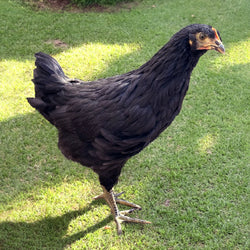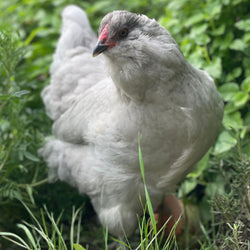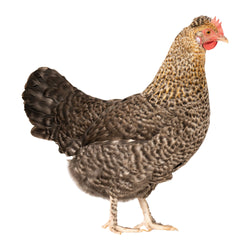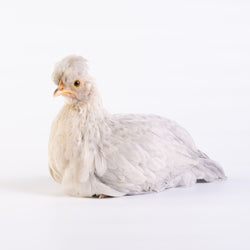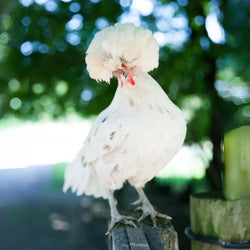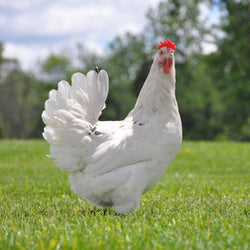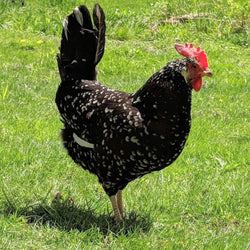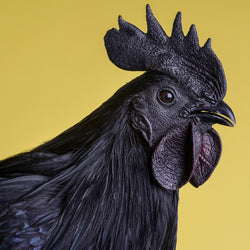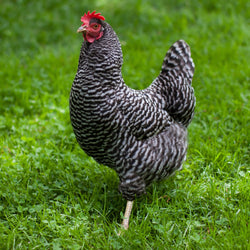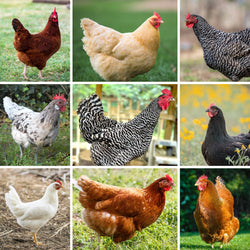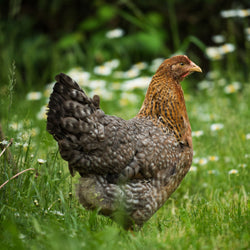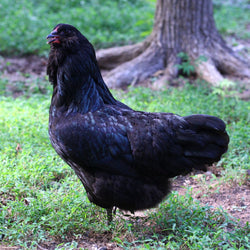page=8/--
Frequently Asked Questions
Here we answer the most commonly-asked questions about ordering, chicken care, and more.
Do you have a catalog?
Not yet! The best way to peruse our offerings for right now is to browse the category listings on the left hand side of any page on our website.
Read MoreDo you include males for warmth in your baby chick packages?
You may have heard that hatcheries sometimes include extra "males for warmth" in their baby chick packages, but you can be sure we'll never purposely include extra males in your order. When necessary, we include one or more heating packs to keep your chicks warm, and to prevent jostling we add extra nesting material. We pack them very carefully. Our goal in life --- yes, our goal in life! --- is to make it easy for you to keep chickens, and having a bunch of extra roosters that you don't know what to do with wouldn't be easy, now would...
Read MoreDo I need to give my hens oyster shell or supplemental calcium?
If your hens have a good, "complete" layer feed, they may not ever need oyster shells or any supplemental calcium. However, it never hurts--and it can really help avoid potential pitfalls in a number of ways. Oyster shell is inexpensive and lasts a long time, so it's worth adding to your flock's diet. The reason they may need it is that some flocks that spend most of the day foraging, or are given too many treats, can develop a calcium deficiency, particularly if they are high production layers. If they're eating too many treats, they won't get all the calcium...
Read MoreShould I get my birds vaccinated?
Here at My Pet Chicken, we offer a Marek's disease vaccination for all baby chicks. Marek's disease is the #1 disease-related killer of chickens. It can cause paralysis, blindness and death in up to 80% of an infected flock. There is no cure for a flock once it has been infected; the only way to prevent the disease is to vaccinate for it within 24 hours of the chick hatching. Learn more about Marek's disease. Yes, you should get your chicks vaccinated To be blunt about it, yes. Make the small investment in a Marek's vaccine for your chickens. While...
Read MoreCan you tell the sex of chicks when they're still in the egg?
There is no reliable way for the average home hatcher to tell the difference between an egg that will hatch a female chick and an egg that will hatch a male chick. In-ovo DNA testing and spectroscopy are being developed for certain applications, but most of us don't have this technology readily available at home! Instead, there are lots of old wives' tales out there, most of which have to do with the shape of the egg or which way a string swings when you hold it above an egg. In most cases, you will find that in one area...
Read MoreWhat is this black spot or thin string attached to my baby chick's rear end?
It's your chick's umbilical cord, and if you notice, that black, scabby spot or string will be below your check's vent or "pooper." Be SURE not to confuse this with pasting, which occurs on the vent, not below it. Usually the umbilical cord falls off immediately during hatching, but sometimes it can hang around for a few days (or it falls off but the belly button takes a while to heal, leaving a scabby spot). This can happen whether you hatch at home, or if you order from My Pet Chicken or another hatchery. Please don't try to remove it,...
Read MoreAre fertilized eggs okay to eat?
Fertilized eggs are fine to eat, in fact some people claim they healthier than unfertilized eggs, although we've never seen any data supporting that. (Let's be honest; if the fertile egg is fresh and unincubated, you're going to have the addition of just half a cell.) Illustration by Ray Yang for My Pet Chicken It is impossible to taste the difference between a fertile and an infertile egg, and barely possible to SEE the difference between a fertilized and non-fertilized egg with the naked eye. If you look closely--and if you have good vision--you will see that a fertile egg...
Read MoreHow can I tell if my juvenile bird is a rooster?
Comb size and redness can be one indicator, but is not usually reliable. In fact, it's one of the worst indicators you can use, as comb size varies by breed and even individual. For instance, one of my hens has a larger comb than any of her sisters of the same breed, and a larger comb than any of my roosters, too. When sexing most juveniles, the best, most fail-safe method is to look at the saddle feathers in front of the tail when the bird is about 3 months old. By that age, cockerels will have long and pointy...
Read More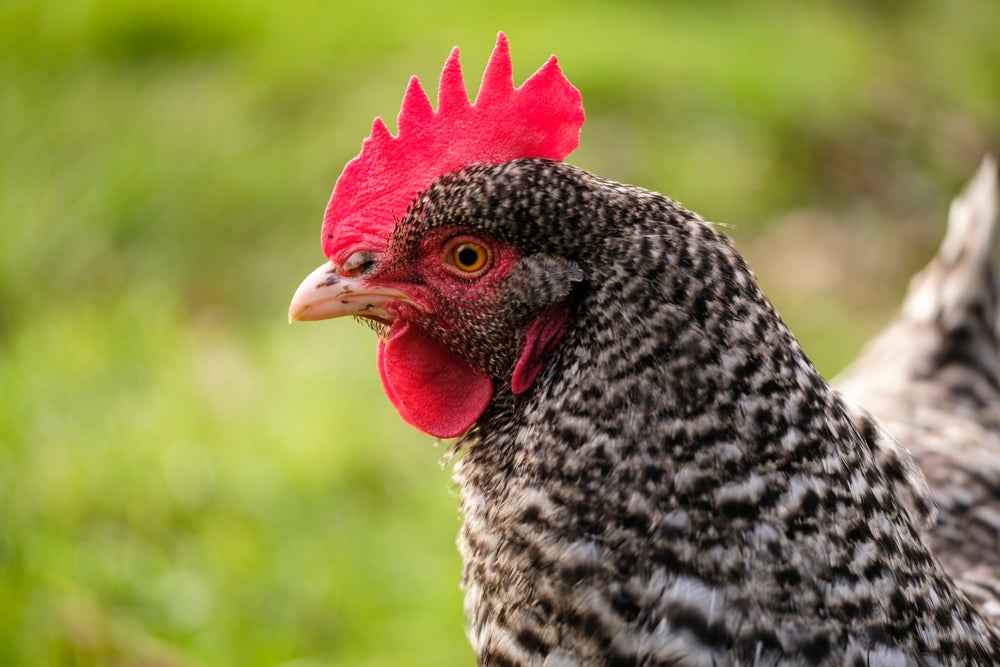
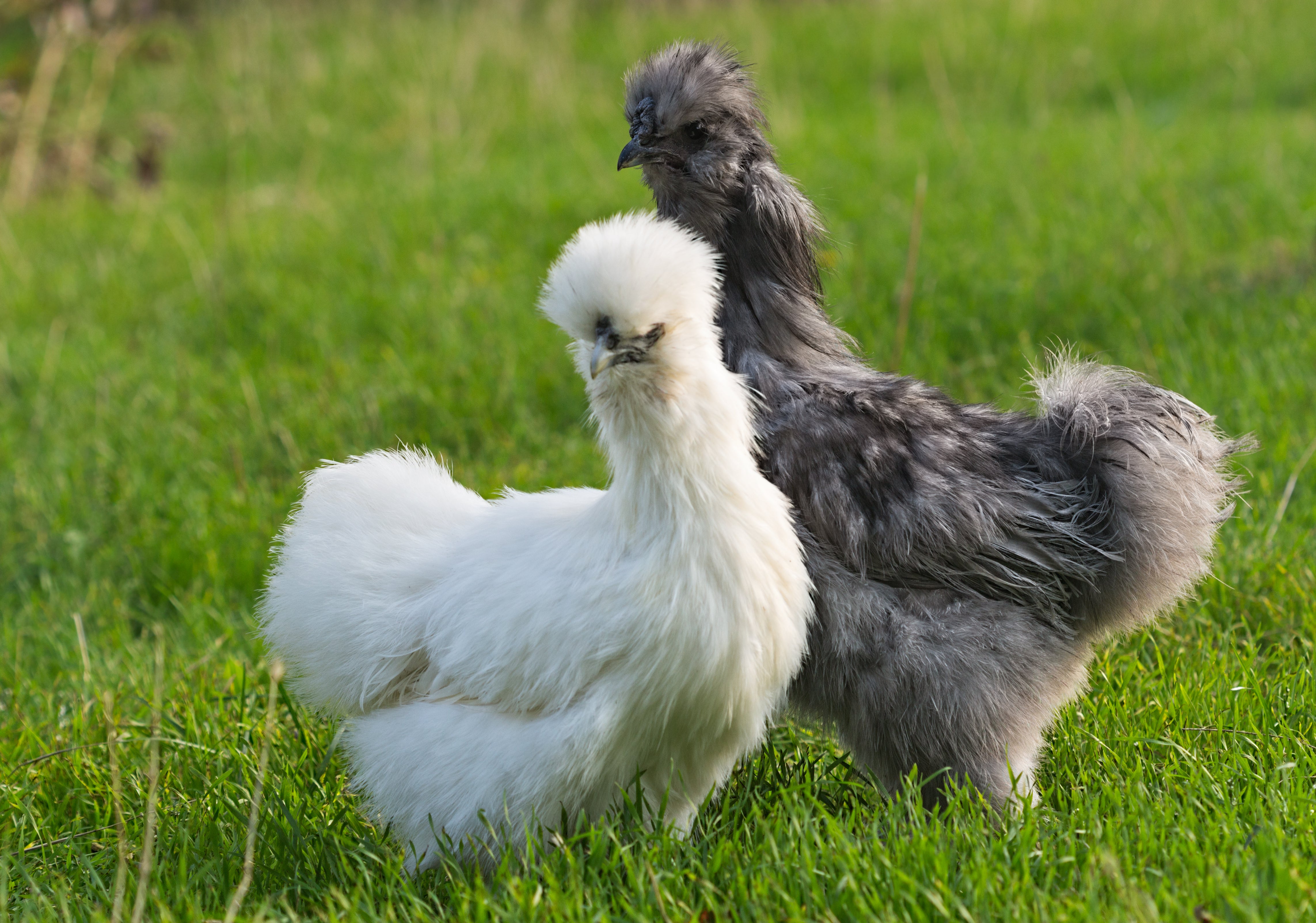
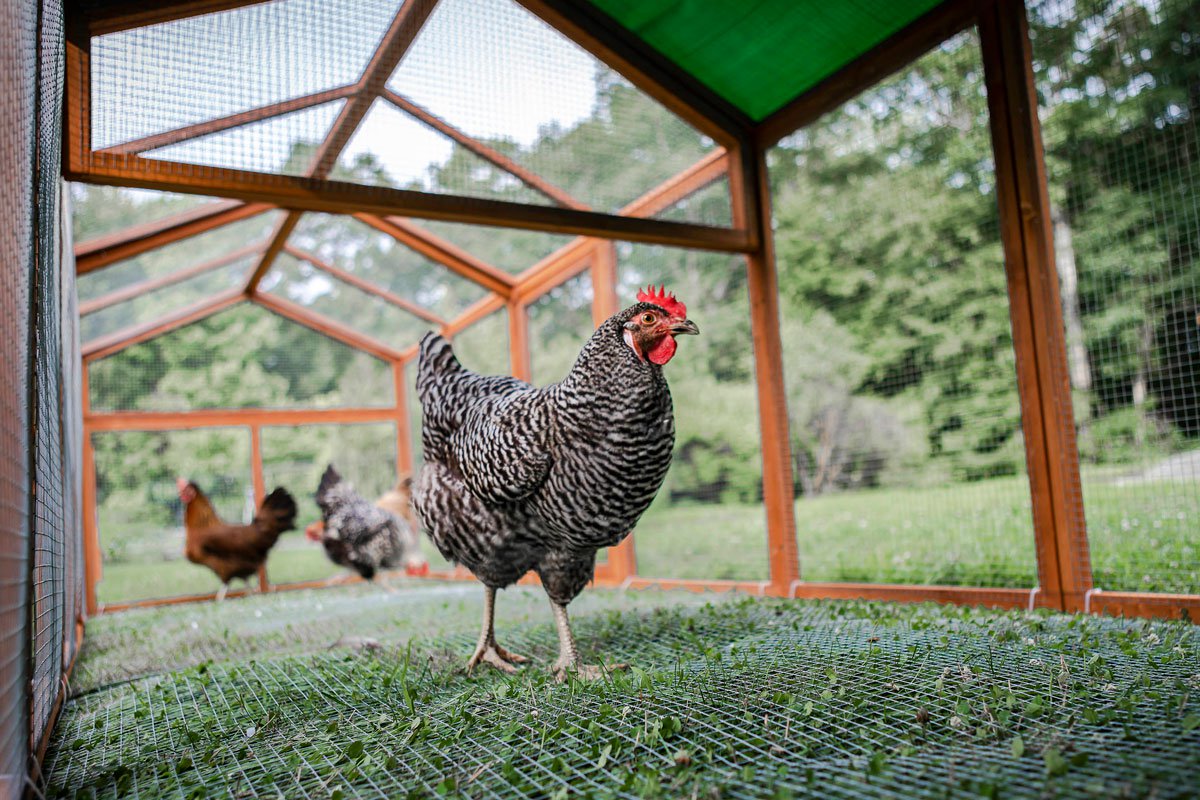
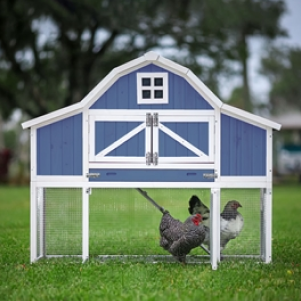
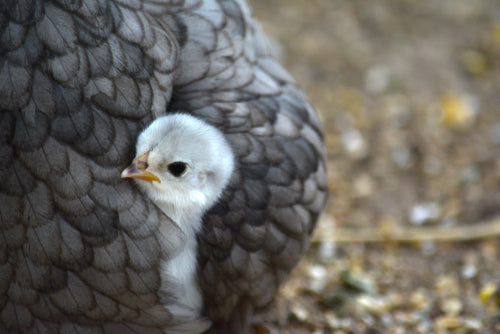
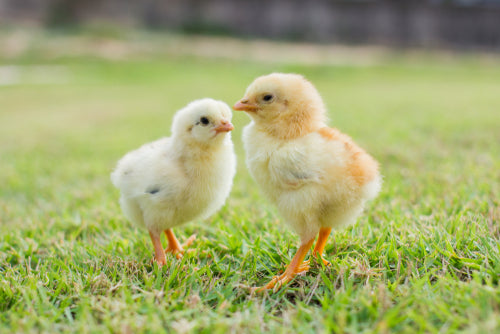
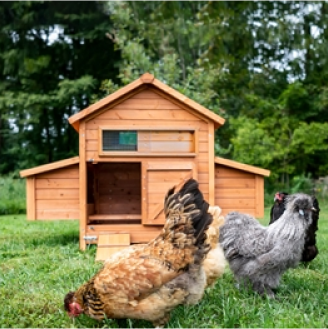

"The Clubhouse" Coop
Easy to assemble and built to last, the Clubhouse Coop is the perfect starter coop for a small flock.
